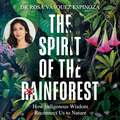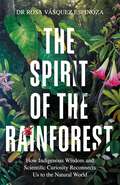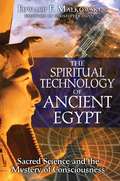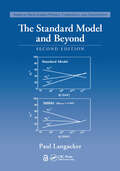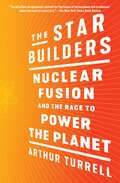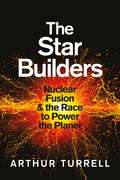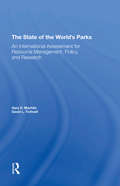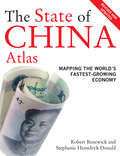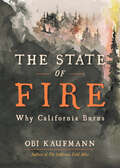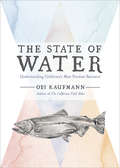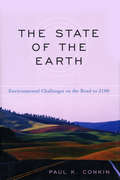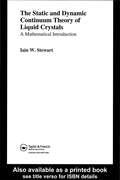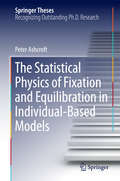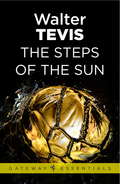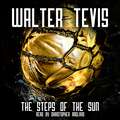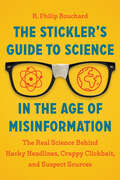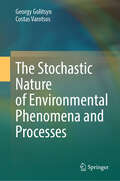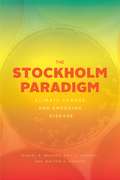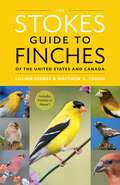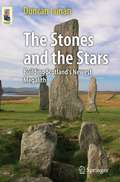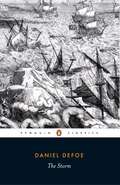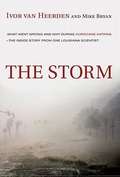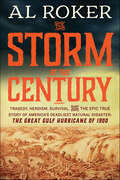- Table View
- List View
The Spirit of the Rainforest: How Indigenous Wisdom Reconnects Us to Nature
by Dr Rosa Vásquez EspinozaBefore you step into the jungle, there are a few things you need to know...Join scientist Dr Rosa Vasquez Espinoza as she uncovers one of the most unexplored regions on the planet.Dr Rosa is no stranger to the Amazon. Growing up with the rainforest as her back garden, she learnt the lessons of the rainforest from her grandmother, a native healer in natural medicine. She went on to pursue a classical education in science, gaining a PhD in the US, but has always been pulled back to the heart of the Amazon. As a leading biologist in her field, Rosa continues to explore the region through a unique blend of scientific inquiry and ancient insight.In this debut, you'll learn about Dr Rosa's journeys in the Amazon: her treacherous encounters with a boiling river, her conservation work with stingless bees, her experience of taking ayahuasca as a natural psychedelic - and all the amazing biodiversity of the rainforest. At the heart of Rosa's expedition is her passion to combine science with the indigenous knowledge of the Amazon. She shares her experience of learning from the indigenous communities that she visits, and shows what they have to teach us - stretching beyond the realm scientific knowledge. Here Rosa learns the most important lessons in how to reconnect to the natural world - and, in turn, will teach us to do the same.In this book, Rosa celebrates the richness of Amazonian culture, the wonders of biodiversity, and the enduring spiritual connections between humanity and the natural world.
The Spirit of the Rainforest: How indigenous wisdom and scientific curiosity reconnects us to the natural world
by Dr Rosa Vásquez EspinozaBefore you step into the jungle, there are a few things you need to know...Join scientist Dr Rosa Vasquez Espinoza as she uncovers one of the most unexplored regions on the planet.Dr Rosa is no stranger to the Amazon. Growing up with the rainforest as her back garden, she learnt the lessons of the rainforest from her grandmother, a native healer in natural medicine. She went on to pursue a classical education in science, gaining a PhD in the US, but has always been pulled back to the heart of the Amazon. As a leading biologist in her field, Rosa continues to explore the region through a unique blend of scientific inquiry and ancient insight.In this debut, you'll learn about Dr Rosa's journeys in the Amazon: her treacherous encounters with a boiling river, her conservation work with stingless bees, her experience of taking ayahuasca as a natural psychedelic - and all the amazing biodiversity of the rainforest. At the heart of Rosa's expedition is her passion to combine science with the indigenous knowledge of the Amazon. She shares her experience of learning from the indigenous communities that she visits, and shows what they have to teach us - stretching beyond the realm scientific knowledge. Here Rosa learns the most important lessons in how to reconnect to the natural world - and, in turn, will teach us to do the same.In this book, Rosa celebrates the richness of Amazonian culture, the wonders of biodiversity, and the enduring spiritual connections between humanity and the natural world.
The Spirit of the Rainforest: How indigenous wisdom and scientific curiosity reconnects us to the natural world
by Dr Rosa Vásquez EspinozaBefore you step into the jungle, there are a few things you need to know...Join scientist Dr Rosa Vasquez Espinoza as she uncovers one of the most unexplored regions on the planet.Dr Rosa is no stranger to the Amazon. Growing up with the rainforest as her back garden, she learnt the lessons of the rainforest from her grandmother, a native healer in natural medicine. She went on to pursue a classical education in science, gaining a PhD in the US, but has always been pulled back to the heart of the Amazon. As a leading biologist in her field, Rosa continues to explore the region through a unique blend of scientific inquiry and ancient insight.In this debut, you'll learn about Dr Rosa's journeys in the Amazon: her treacherous encounters with a boiling river, her conservation work with stingless bees, her experience of taking ayahuasca as a natural psychedelic - and all the amazing biodiversity of the rainforest. At the heart of Rosa's expedition is her passion to combine science with the indigenous knowledge of the Amazon. She shares her experience of learning from the indigenous communities that she visits, and shows what they have to teach us - stretching beyond the realm scientific knowledge. Here Rosa learns the most important lessons in how to reconnect to the natural world - and, in turn, will teach us to do the same.In this book, Rosa celebrates the richness of Amazonian culture, the wonders of biodiversity, and the enduring spiritual connections between humanity and the natural world.
The Spiritual Technology of Ancient Egypt: Sacred Science and the Mystery of Consciousness
by Christopher Dunn Edward F. MalkowskiHow ancient Egyptians understood quantum theory • Investigates the history of how modern religion and the Age of Science were inspired by the sacred science of the ancients • Examines how quantum theory explains that the cosmos arises from consciousness • Reveals the unanimity between Schwaller de Lubicz’s “sacred science” and the science of a cosmos governed by quantum mechanics Since the dawn of the Age of Science humankind has been engaged in a methodical quest to understand the cosmos. With the development of quantum mechanics, the notion that everything is solid matter is being replaced with the idea that information or “thought” may be the true source of physical reality. Such scientific inquiry has led to a growing interest in the brain’s unique and mysterious ability to create perception, possibly through quantum interactions. Consciousness is now being considered as much a fundamental part of reality as the three dimensions we are so familiar with. Although this direction in scientific thought is seen as a new approach, the secret wisdom of the ancients presented just such a view thousands of years ago.Building on René A. Schwaller de Lubicz’s systematic study of Luxor’s Temple of Amun-Mut-Khonsu during the 1940s and ’50s, Edward Malkowski shows that the ancient Egyptians' worldview was not based on superstition or the invention of myth but was the result of direct observation using critical faculties attuned to the quantum manifestation of the universe. This understanding of reality as a product of human consciousness provided the inspiration for the sacred science of the ancients--precisely the philosophy modern science is embracing today. In the philosophical tradition of Schwaller de Lubicz, The Spiritual Technology of Ancient Egypt investigates the technical and religious legacy of ancient Egypt to reveal its congruence with today’s “New Science.”
The Standard Model and Beyond (Series in Particle Physics, Cosmology and Gravitation)
by Paul LangackerThis new edition of The Standard Model and Beyond presents an advanced introduction to the physics and formalism of the standard model and other non-abelian gauge theories. It provides a solid background for understanding supersymmetry, string theory, extra dimensions, dynamical symmetry breaking, and cosmology. In addition to updating all of the experimental and phenomenological results from the first edition, it contains a new chapter on collider physics; expanded discussions of Higgs, neutrino, and dark matter physics; and many new problems. The book first reviews calculational techniques in field theory and the status of quantum electrodynamics. It then focuses on global and local symmetries and the construction of non-abelian gauge theories. The structure and tests of quantum chromodynamics, collider physics, the electroweak interactions and theory, and the physics of neutrino mass and mixing are thoroughly explored. The final chapter discusses the motivations for extending the standard model and examines supersymmetry, extended gauge groups, and grand unification. Thoroughly covering gauge field theories, symmetries, and topics beyond the standard model, this text equips readers with the tools to understand the structure and phenomenological consequences of the standard model, to construct extensions, and to perform calculations at tree level. It establishes the necessary background for readers to carry out more advanced research in particle physics. Supplementary materials are provided on the author’s website and a solutions manual is available for qualifying instructors.
The Star Builders: Nuclear Fusion and the Race to Power the Planet
by Arthur TurrellFrom a young, award-winning scientist, a look at one of the most compelling and historic turning points of our time—the race to harness the power of the stars and produce controlled fusion, creating a practically unlimited supply of clean energy.The most important energy-making process in the universe takes place inside stars. The ability to duplicate that process in a lab, once thought out of reach, may now be closer than we think. Today, all across the world teams of scientists are being assembled by the world&’s boldest entrepreneurs, big business, and governments to solve what is the most difficult technological challenge humanity has ever faced: building the equivalent of a star on earth. If their plans to capture star power are successful, they will unlock thousands, potentially millions, of years of clean, carbon-free energy. Not only would controlled nuclear fusion go a long way toward solving the climate crisis, it could help make other highly desired technological ambitions possible—like journeying to the stars. Given the rising alarm over deterioration of the environment, and the strides being made in laser and magnetic field technology, powerful momentum is gathering behind fusion and the possibilities it offers. Arthur Turrell is an award-winning young plasma physicist with a unique talent for making complex science accessible. In The Star Builders, he describes fascinating star machines with ten times as many parts as the NASA Space Shuttle, and structures that extend over 400 acres. And he spotlights the individuals, firms, and institutions racing for the finish line: science-minded entrepreneurs like Jeff Bezos and Peter Thiel, companies like Goldman Sachs and Google, universities like Oxford and MIT, and virtually every rich nation. It&’s an exciting and game-changing international quest that, when completed, will make all of us winners.
The Star Builders: Nuclear Fusion and the Race to Power the Planet
by Arthur TurrellIs it possible to build a star on earth? When asked what problem he hoped scientists will have solved by the end of the century, Professor Stephen Hawking replied 'I would like nuclear fusion to become a practical power source. It would provide an inexhaustible supply of energy, without pollution or global warming.' But what is nuclear fusion, and could it really be the answer to the climate emergency? Fusion exists already in the stars that fill our universe with light, but can we harness that power here on earth? This is the question The Star Builders seeks to answer. In his compelling new book, Dr Arthur Turrell makes the case for cutting-edge new techniques in nuclear energy - innovations that would allow us to recreate the power of the stars on our own planet. Filled with the remarkable stories of the scientists and entrepreneurs who have dedicated their lives to a seemingly impossible dream, The Star Builders is an unmissable insight into the future of life - and space - on our planet.
The State Of The World's Parks: An International Assessment For Resource Management, Policy, And Research
by Gary E Machlis David L. TichnellNational parks are a global phenomenon found in more than 120 countries. These parks are as diverse as the physical settings and cultural patterns of the many nations that have established them, yet within each country they serve as part of the cohesiveness that binds people together. Parks reflect-and help create-people's pride and love for their national heritage.
The State of China Atlas: Mapping the World's Fastest-Growing Economy
by Stephanie Hemelryk Donald Robert BenewickThis magnificently produced atlas provides a unique visual survey of the profound economic, political, and social changes taking place in China, as well as their implications for the world at large. China has the world's fastest-growing economy and is the second-largest trading nation. With its pro-entrepreneurial outlook and population of 1.3 billion, it offers unique opportunities for domestic and overseas investors. This dynamic volume provides an abundance of information on China's new wealth, growing unemployment, mass migration to the cities, and trade disputes. Completely Revised and Updated: * Vivid full-color maps convey a wealth of information quickly and efficiently * Comprehensive information on China's population, employment, agriculture, industry, and economics Copub: Myriad Editions Limited
The State of Fire: Why California Burns
by Obi KaufmannHow do we live with fire? From the creator of The California Field Atlas, a book of stewardship, resilience, and hope.Fire is an essential part of California's ecology. Humans have been using it to shape the California landscape for thousands of years. But today many Californians' relationship to fire is one of fear. Obi Kaufmann, author of the best-selling California Field Atlas, now asks: How do we live with fire? What makes fire essential to a healthy and biodiverse Golden State, and how do we benefit from its teachings? With the same solution-minded ethic as his much-admired The State of Water: Understanding California's Most Precious Resource, Kaufmann presents fire as a force of regeneration rather than apocalypse. He considers the long history of ecological burns, the varied ways fire behaves across the state, and the lessons we can learn from California's largest fires of recent decades.Packed with Kaufmann's signature watercolor maps and paintings, The State of Fire confronts one of California's most pressing social and ecological challenges. From this maelstrom Kaufmann emerges to share a deepened love for the natural world—and a refreshingly hopeful vision of California's future.
The State of Water: Understanding California's Most Precious Resource
by Obi KaufmannObi Kaufmann, author of the best-selling California Field Atlas, turns his artful yet analytical attention to the Golden State's single most complex and controversial resource: water. In this new book, full-color maps unravel the braided knot of California's water infrastructure and ecosystems, exposing a history of unlimited growth in spite of finite natural resources—a history that has led to its current precarious circumstances. Yet this built world depends upon the biosphere, and in The State of Water Kaufmann argues that environmental conservation and restoration efforts are necessary not only for ethical reasons but also as a matter of human survival. Offering nine perspectives to illustrate the most pressing challenges facing California's water infrastructure, from dams to species revitalization, Kaufmann reveals pragmatic yet inspiring solutions to how water in the West can continue to support agriculture, municipalities, and the environment. Interspersed throughout with trail paintings of animals that might yet survive under a caring and careful water ethic, Kaufmann shows how California can usher in a new era of responsible water conservation, and—perhaps most importantly—how we may do so together.
The State of the Earth: Environmental Challenges on the Road to 2100
by Paul K. ConkinAn assessment of where we are, where we&’re headed, and what we need to do before it&’s too late: &“Instructive, well-researched, and easy-to-read.&” —John T. Ackerman, Strategic Studies Quarterly This era of staggering scientific and technological innovations, with major changes in agriculture, manufacturing, commerce, and communications, seems to document unparalleled human achievement. Yet when we examine the long-term implications, it becomes clear that the delicate environmental balance that sustains life on this planet is under serious threat, and the past century may be remembered not as a period of great progress but as one marked by unrestrained consumption and failure to come close to a sustainable use of the earth&’s limited natural resources. In The State of the Earth, noted historian Paul K. Conkin provides a comprehensive analysis of the many environmental hazards that humans must face in this still-young century. Our activities have threatened the survival of many plants and animals, created scarcities in cultivatable soils and water needed for irrigation, used up a large share of fossil fuels, polluted air and water, and most likely created conditions that will lead to devastating climate changes. This is an invaluable resource for those who desire a broad yet thorough and scientifically informed introduction to present environmental challenges.
The Static and Dynamic Continuum Theory of Liquid Crystals: A Mathematical Introduction (Liquid Crystals Book Series)
by Iain W. StewartGiven the widespread interest in macroscopic phenomena in liquid crystals, stemming from their applications in displays and devices. The need has arisen for a rigorous yet accessible text suitable for graduate students, whatever their scientific background. This book satisfies that need.The approach taken in this text, is to introduce the basic continuum theory for nematic liquid crystals in equilibria, then it proceeds to simple application of this theory- in particular, there is a discussion of electrical and magnetic field effects which give rise to Freedericksz transitions, which are important in devices. This is followed by an account of dynamic theory and elementary viscometry of nemantics Discussions of backflow and flow-induced instabilities are also included. Smetic theory is also briefly introduced and summarised with some examples of equilibrium solutions as well as those with dynamic effects. A number of mathematical techniques, such as Cartesian tensors and some variational calculus, are presented in the appendices.
The Statistical Mechanics of Irreversible Phenomena
by Pierre GaspardThis book provides a comprehensive and self-contained overview of recent progress in nonequilibrium statistical mechanics, in particular, the discovery of fluctuation relations and other time-reversal symmetry relations. The significance of these advances is that nonequilibrium statistical physics is no longer restricted to the linear regimes close to equilibrium, but extends to fully nonlinear regimes. These important new results have inspired the development of a unifying framework for describing both the microscopic dynamics of collections of particles, and the macroscopic hydrodynamics and thermodynamics of matter itself. The book discusses the significance of this theoretical framework in relation to a broad range of nonequilibrium processes, from the nanoscale to the macroscale, and is essential reading for researchers and graduate students in statistical physics, theoretical chemistry and biological physics.
The Statistical Physics of Fixation and Equilibration in Individual-Based Models
by Peter AshcroftThis thesis explores several interdisciplinary topics at the border of theoretical physics and biology, presenting results that demonstrate the power of methods from statistical physics when applied to neighbouring disciplines. From birth-death processes in switching environments to discussions on the meaning of quasi-potential landscapes in high-dimensional spaces, this thesis is a shining example of the efficacy of interdisciplinary research. The fields advanced in this work include game theory, the dynamics of cancer, and invasion of mutants in resident populations, as well as general contributions to the theory of stochastic processes. The background material provides an intuitive introduction to the theory and applications of stochastic population dynamics, and the use of techniques from statistical physics in their analysis. The thesis then builds on these foundations to address problems motivated by biological phenomena.
The Steps of the Sun: From the author of The Queen's Gambit – now a major Netflix drama (Gateway Essentials #510)
by Walter TevisA science fiction thriller from the author of THE MAN WHO FELL TO EARTH.'A fine engrossing novel by a master!' Philadelphia EnquirerIn a time when America's power has been eroded by energy depletion, and world control has been virtually given over to the Chinese, only one man has the courage to seek new mineral resources among the stars. He is Ben Belson, one of the richest men in the world, a man haunted by the memory of a loveless childhood and driven by needs and desires he can barely understand or control. His dream is to find the means to help America break the stranglehold of the corrupt interests who are keeping it a second class power.
The Steps of the Sun: From the author of The Queen's Gambit – now a major Netflix drama (Gateway Essentials #510)
by Walter TevisA science fiction thriller from the author of THE MAN WHO FELL TO EARTH.'A fine engrossing novel by a master!' Philadelphia EnquirerIn a time when America's power has been eroded by energy depletion, and world control has been virtually given over to the Chinese, only one man has the courage to seek new mineral resources among the stars. He is Ben Belson, one of the richest men in the world, a man haunted by the memory of a loveless childhood and driven by needs and desires he can barely understand or control. His dream is to find the means to help America break the stranglehold of the corrupt interests who are keeping it a second class power.
The Stickler's Guide to Science in the Age of Misinformation: The Real Science Behind Hacky Headlines, Crappy Clickbait, and Suspect Sources
by R. Philip BouchardThe Real Science Behind Hacky Headlines, Crappy Clickbait, and Suspect SourcesWe have more scientific information at our fingertips today than ever before. And more disinformation too. Online, on television, and in print, science is often communicated through shorthand analogies and phrases that obscure or omit important facts. &“Superfoods,&” &“right- and left-brained&” people, and &“global warming&” may be snappy and ear-catching but are they backed by scientific facts? Lifelong educator R. Philip Bouchard is a stickler for this kind of thing, and he is well-prepared to set the record straight.The Stickler&’s Guide to Science in the Age of Misinformation unpacks the many misuses of terms we see used every day, revealing how these popular &“scientific&” concepts fall short of real science. Find out why trees do not &“store&” carbon dioxide; a day is not actually 24 hours; DNA cannot provide a &“blueprint&” for a human being; and an absence of gravity is not the reason that astronauts float in space.With The Stickler&’s Guide to Science in the Age of Misinformation, Bouchard makes hard science go down easy, satisfying curiosity and sparking further inquiry that will keep you from getting fooled again.
The Stochastic Nature of Environmental Phenomena and Processes
by Costas Varotsos Georgy GolitsynThis book is useful not only for young but also for mature scientists who are preparing methods for studying natural environmental phenomena and their alteration by human activity. As spatio-temporal scales of natural environmental phenomena become larger, the variance of their fluctuations increases or decreases over wide ranges. Such signals appear not only in environmental dynamics but everywhere, even in seemingly unrelated fields. When one looks at these signals more closely, one finds that they are governed by specific, measurable scaling laws, that is, a statistical relationship between big and small, between fast and slow. In this book, the authors describe and explain processes that have puzzled environmental science for decades, such as the climate crisis, clouds, turbulence, earthquakes, cosmic rays, sea wind waves, hurricanes, floods, radiation field in the climate system, ozone hole, greenhouse effect, air pollution, El Nino / La Nina, nowcasting models.
The Stockholm Paradigm: Climate Change and Emerging Disease
by Daniel R. Brooks Eric P. Hoberg Walter A. BoegerThe contemporary crisis of emerging disease has been a century and a half in the making. Human, veterinary, and crop health practitioners convinced themselves that disease could be controlled by medicating the sick, vaccinating those at risk, and eradicating the parts of the biosphere responsible for disease transmission. Evolutionary biologists assured themselves that coevolution between pathogens and hosts provided a firewall against disease emergence in new hosts. Most climate scientists made no connection between climate changes and disease. None of these traditional perspectives anticipated the onslaught of emerging infectious diseases confronting humanity today. As this book reveals, a new understanding of the evolution of pathogen-host systems, called the Stockholm Paradigm, explains what is happening. The planet is a minefield of pathogens with preexisting capacities to infect susceptible but unexposed hosts, needing only the opportunity for contact. Climate change has always been the major catalyst for such new opportunities, because it disrupts local ecosystem structure and allows pathogens and hosts to move. Once pathogens expand to new hosts, novel variants may emerge, each with new infection capacities. Mathematical models and real-world examples uniformly support these ideas. Emerging disease is thus one of the greatest climate change–related threats confronting humanity. Even without deadly global catastrophes on the scale of the 1918 Spanish Influenza pandemic, emerging diseases cost humanity more than a trillion dollars per year in treatment and lost productivity. But while time is short, the danger is great, and we are largely unprepared, the Stockholm Paradigm offers hope for managing the crisis. By using the DAMA (document, assess, monitor, act) protocol, we can “anticipate to mitigate” emerging disease, buying time and saving money while we search for more effective ways to cope with this challenge.
The Stokes Guide to Finches of the United States and Canada
by Lillian Q. Stokes Matthew A. YoungLearn all you need to know about identifying and attracting finches with this comprehensive, gloriously colorful field guide from America&’s foremost authorities on birds and nature. Following the extraordinary finch superflight of 2020-2021, birders across the country became obsessed with finches. With The Stokes Guide to Finches of the United States and Canada, you can gain expert knowledge on these beautiful birds and bring them into your own yard. This fully illustrated guide tells you all you need to know about attracting, observing, and protecting finches. The book also includes: A special section on endangered Hawaiian honeycreeper finches, plus other rare and vagrant species Detailed identification information on each finch species&’ plumages, subspecies, and voice The most complete and up-to-date range maps, including maps of core occurrence and irruption ranges for all red crossbill call types, which have never before been published in a guide Complete life history information Scientific studies on finch migrations and conservation More than 345 stunning full-color photographs and over 50 range maps covering 43 species
The Stones and the Stars
by Duncan LunanThere are at least 48 identified prehistoric stone circles in Scotland. In truth, very little is known about the people who erected them, and ultimately about what the stone circles were for. Most stone circles are astronomically aligned, which has led to the modern debate about why the alignment was significant. The megaliths certainly represented an enormous co-operative effort, would at the very least have demonstrated power and wealth, and being set away from any dwellings probably served a ceremonial, or perhaps religious, purpose. Observations at the site of the stone circles, of solar, lunar, and stellar events, have already cast light on some of the questions about the construction and use of ancient megalithic observatories. In his capacity as manager of the Parks Department Astronomy Project, author Duncan Lunan designed and built the first astronomically aligned stone circle in Britain in over 3,000 years. 'The Stones and the Stars' examines the case for astronomical alignments of stone circles, and charts the development of a fascinating project with a strong scientific and historical background. The work was documented in detail by the artist and photographer Gavin Roberts, and this archive has been added to since - so an appropriate selection of illustrations will bring the project vividly to life.
The Storm
by Daniel DefoeOn the evening of 26th November 1703, a cyclone from the north Atlantic hammered into southern Britain at over seventy miles an hour, claiming the lives of over 8,000 people. Eyewitnesses reported seeing cows left stranded in the branches of trees and windmills ablaze from the friction of their whirling sails. For Defoe, bankrupt and just released from prison for seditious writings, the storm struck during one of his bleakest moments. But it also furnished him with the material for his first book, and in his powerful depiction of private suffering and individual survival played out against a backdrop of public calamity we can trace the outlines of his later masterpieces such as A Journal of the Plague Year and Robinson Crusoe.
The Storm
by Mike Bryan Ivor Van Heerden Field SketchesThe ultimate inside story: how bureaucracy, politics, and a disregard of science combined to cripple-perhaps forever-a great American city As deputy director of the Louisiana State University Hurricane Center, Ivor van Heerden had for years been warning state and local officials about New Orleans's vulnerability to flooding. But like Cassandra's, his predictions were ignored-until Hurricane Katrina hit on August 29, 2005. Suddenly, van Heerden found himself at the center of a media maelstrom. Stepping forward to challenge the official version of events, he revealed the truth about the city's shoddy levee construction. Now, in The Storm, van Heerden shares up-to-the-minute reporting from his investigations and connects the dots among the Army Corps of Engineers, the bureaucrats, the politicians, and the chain of events-both natural and human-that culminated in catastrophe. An epic of cutting- edge science and systemic bureaucratic failure, The Storm is the first book from a major player in the Katrina disaster and a riveting narrative that brings expertise, passion, and a human viewpoint to America's greatest natural disaster.
The Storm of the Century: Tragedy, Heroism, Survival, and the Epic True Story of America's Deadliest Natural Disaster
by Al RokerIn this gripping narrative history, Al Roker from NBC’s Today and the Weather Channel vividly examines the deadliest natural disaster in American history—a haunting and inspiring tale of tragedy, heroism, and resilience that is full of lessons for today’s new age of extreme weather.On the afternoon of September 8, 1900, two-hundred-mile-per-hour winds and fifteen-foot waves slammed into Galveston, the booming port city on Texas’s Gulf Coast. By dawn the next day, the city that hours earlier had stood as a symbol of America’s growth and expansion was now gone. Shattered, grief-stricken survivors emerged to witness a level of destruction never before seen: Eight thousand corpses littered the streets and were buried under the massive wreckage. Rushing water had lifted buildings from their foundations, smashing them into pieces, while wind gusts had upended steel girders and trestles, driving them through house walls and into sidewalks. No race or class was spared its wrath. In less than twenty-four hours, a single storm had destroyed a major American metropolis—and awakened a nation to the terrifying power of nature.Blending an unforgettable cast of characters, accessible weather science, and deep historical research into a sweeping and dramatic narrative, The Storm of the Century brings this legendary hurricane and its aftermath into fresh focus. No other natural disaster has ever matched the havoc caused by the awesome mix of winds, rain, and flooding that devastated Galveston and shocked a young, optimistic nation on the cusp of modernity. Exploring the impact of the tragedy on a rising country’s confidence—the trauma of the loss and the determination of the response—Al Roker illuminates the United States’s character at the dawn of the “American Century,” while also underlining the fact that no matter how mighty they may become, all nations must respect the ferocious potential of our natural environment.
